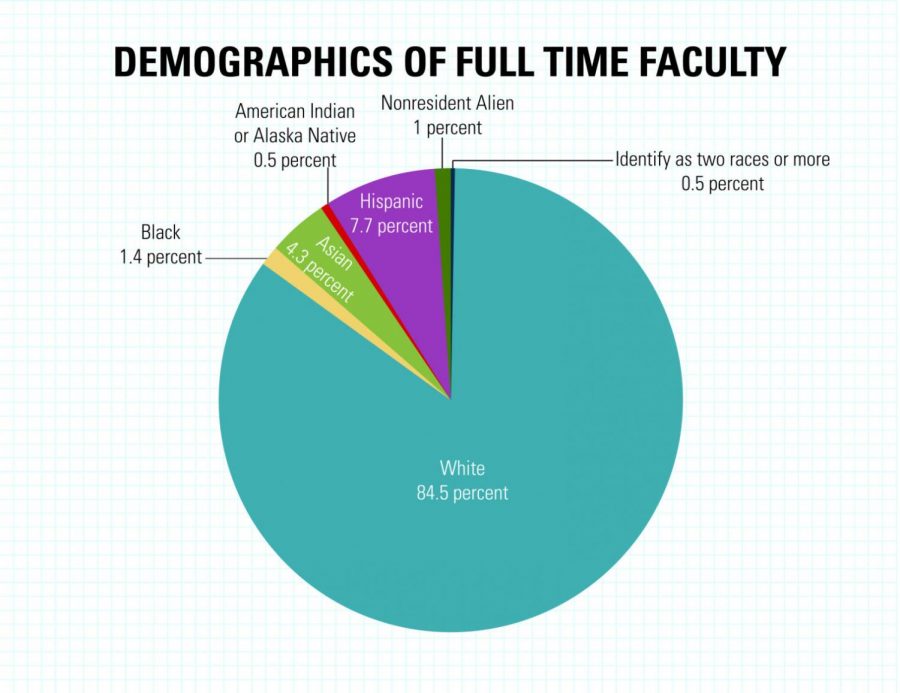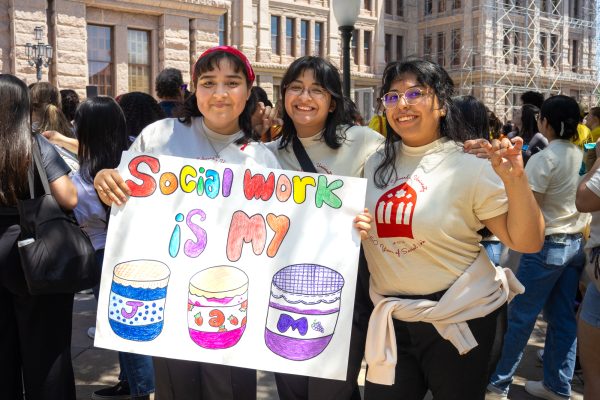Campus faculty lacks diversity
On a typical day at St. Edward’s University, it is easy to notice the immense diversity among the university’s student population. The same cannot be said among its faculty.
St. Edward’s boasts students from 45 states and 44 countries. It has the second-most diverse student population among its 13 peer institutions including Trinity University, Texas Christian University and Baylor University, according to the Chronicle of Higher Education and the St. Edward’s Fact Book.
In the residence halls, dining halls and classrooms, it is common to hear many foreign languages; anything from Spanish and French to Hindi and Afrikaans.
“Meeting students from other places in the world has opened my eyes to so many new things. It has also opened my mind to think beyond just Texas or the United States,” sophomore Michel-Steve Aoudou said.
While St. Edward’s has a diverse student body, its faculty is largely homogenous.
In 2013, St. Edward’s had 474 part-time and full-time staff members, including faculty. Of these, 85 percent were Caucasian; 6.5 percent were Hispanic; 2.95 percent were Asian; and 1.48 percent were African-American, according to Institutional Research.
The other 5 percent accounts for faculty with two or more races, faculty whose ethnicity is unknown and nonresident aliens.
This lack of minority representation within the faculty is a problem the university has acknowledged. There is a diversity committee in place whose purpose is to develop and maintain productive dialogue about the value of a diverse faculty.
Some of St. Edward’s peer institutions including Baylor University, Trinity University and Texas Christian University also have similar diversity committees.
“One of the things, as a committee, we are trying to draw attention to is the mismatch between our student population and our faculty population,” Co-Chair of the Diversity Committee Kelly Green said.
The committee has noticed that the lack of minority faculty is not just a recruitment problem. There is also a significant difference in retention rates with minorities.
“Are they leaving more than our white faculty?” Green said. “Yes, they are.”
It is not clear how the university plans to keep minority faculty.
“Historically we haven’t made enough of an effort to hire and retain faculty of color,” Arcelia Hernández, a Latina assistant professor of bilingual education and a member of the diversity committee, said. “Just this year we’ve lost two of our minority professors: an African-American and a Latina professor. I think that in some ways the university has missed opportunities to keep high-quality professors.”
The diversity committee is trying to institute a policy of exit interviews when professors leave so that it can better understand what factors are driving away minority faculty from St. Edward’s.
Students are also concerned about the effect that the lack of minority faculty is having on their learning experience and their general college experience. Some students said they feel like they are missing out by not being exposed to different cultural viewpoints.
“I feel like I am being robbed of the connection to my professors,” sophomore Daniel Pérez said. “A professor who is Hispanic, like me, will be able to understand and connect with me being the first in my family to go to college, because that is a common thing for many Hispanics today. It’s just harder to make that connection with a white professor.”
The fact that most professors at St. Edward’s are white brings into question the authenticity of the learning at the university and the diversity of thought on different subjects. As ideal as it would be for race to be irrelevant in the classroom, it is evident that when it comes to certain subjects and topics, the race of the professor does make a difference for some students who are looking for a deeper experience than just a textbook or a lecture can provide.
“With topics like slavery, a professor who does not have a racial connection to the history can certainly teach the facts, but we are here to learn more than just facts,” Aoudou said. “For me, I need a person who can connect and make me feel connected to that history. Minority history and minority issues are just better taught by minority professors if college education really is about being connected to our learning.”
Follow Rosemond for more!







